-
EXECUTIVE SUMMARY
-
MARKET ATTRACTIVENESS ANALYSIS 17
-
GLOBAL FLUORINATED PLASMA SURFACE TREATMENT MARKET, BY PROCESS 18
-
GLOBAL
-
FLUORINATED PLASMA SURFACE TREATMENT MARKET, BY TYPE 19
-
GLOBAL FLUORINATED
-
PLASMA SURFACE TREATMENT MARKET, BY APPLICATION 20
-
GLOBAL FLUORINATED
-
PLASMA SURFACE TREATMENT MARKET, BY SUBSTRATE TYPE 21
-
GLOBAL FLUORINATED
-
PLASMA SURFACE TREATMENT MARKET, BY REGION 22
-
MARKET INTRODUCTION
-
DEFINITION 23
-
SCOPE OF THE STUDY 23
-
ASSUMPTIONS 23
-
MARKET STRUCTURE 24
-
RESEARCH METHODOLOGY
-
RESEARCH PROCESS
-
PRIMARY RESEARCH 26
-
SECONDARY RESEARCH 27
-
MARKET SIZE
-
ESTIMATION 27
-
TOP-DOWN AND BOTTOM-UP APPROACH 28
-
FORECAST MODEL
-
LIST OF ASSUMPTIONS 30
-
MARKET DYNAMICS
-
INTRODUCTION
-
DRIVERS 32
- GROWING TEXTILE INDUSTRY IN ASIA-PACIFIC 32
- INCREASING USE OF FLUORINATED PLASMA SURFACE TREATMENT IN SEVERAL END-USE
- DRIVERS IMPACT ANALYSIS 36
-
INDUSTRIES 33
-
RESTRAINTS 36
- RESTRAINTS IMPACT ANALYSIS
-
AVAILABILITY OF ALTERNATE TECHNOLOGIES 36
-
OPPORTUNITIES 37
- PROJECTED INCREASE IN THE DEMAND FOR FLUORINATED
-
PLASMA SURFACE TREATMENT TECHNOLOGY IN EMERGING ECONOMIES 37
-
MARKET
-
FACTOR ANALYSIS
-
GLOBAL SURFACE TREATMENT MARKET OUTLOOK 39
-
RAW
-
MATERIAL ANALYSIS 41
-
TECHNOLOGY OVERVIEW 42
- LOW-PRESSURE PLASMA
- ATMOSPHERIC PLASMA 43
-
SUPPLY CHAIN ANALYSIS 44
- SYSTEM MANUFACTURERS AND SERVICE PROVIDERS
- DISTRIBUTION CHANNEL 46
- END-USE INDUSTRY 46
-
RAW MATERIAL SUPPLIERS 45
-
PORTER’S
- THREAT OF NEW ENTRANTS 47
- INTENSITY OF
- THREAT OF SUBSTITUTES 48
- BARGAINING POWER OF SUPPLIERS
- BARGAINING POWER OF BUYERS 48
-
FIVE FORCES MODEL 46
-
RIVALRY 48
-
REGULATORY OVERVIEW 49
-
PROS & CONS OF LOW-PRESSURE PLASMA & ATMOSPHERIC PRESSURE PLASMA 50
-
COMPARATIVE ANALYSIS: FLUORINATED PLASMA SURFACE TREATMENT VS WET CHEMICAL SURFACE
-
TREATMENT 50
-
GLOBAL FLUORINATED PLASMA SURFACE TREATMENT MARKET, BY
-
PROCESS
-
.1 OVERVIEW 52
-
ESTIMATES & FORECAST BY PROCESS, 2020-2027 53
-
& FORECAST BY REGION, 2020-2027 54
-
FLUORINATED PLASMA SURFACE TREATMENT: MARKET
-
LOW-PRESSURE PLASMA 53
- LOW-PRESSURE PLASMA: MARKET ESTIMATES & FORECAST BY REGION,2020-2027
-
ATMOSPHERIC PLASMA 54
- ATMOSPHERIC PLASMA: MARKET ESTIMATES
-
GLOBAL FLUORINATED PLASMA SURFACE
-
TREATMENT MARKET, BY TYPE
-
OVERVIEW 56
- FLUORINATED PLASMA SURFACE
-
TREATMENT: MARKET ESTIMATES & FORECAST BY TYPE, 2020-2027 57
-
SYNTHETIC
- SYNTHETIC FIBERS: MARKET ESTIMATES & FORECAST BY REGION,
- SYNTHETIC FIBERS: MARKET ESTIMATES & FORECAST BY SYNTHETIC
-
FIBERS 58
-
FIBERS TYPE, 2020-2027 58
-
NATURAL FIBERS 59
- NATURAL FIBERS:
- NATURAL FIBERS:
-
MARKET ESTIMATES & FORECAST BY REGION, 2020-2027 59
-
MARKET ESTIMATES & FORECAST BY NATURAL FIBERS TYPE, 2020-2027 60
-
PLASTIC
- PLASTIC FILMS: MARKET ESTIMATES & FORECAST BY REGION, 2020-2027
-
FILMS 60
-
METALS 61
- METALS: MARKET ESTIMATES & FORECAST BY REGION,
-
OTHERS 62
- OTHERS: MARKET ESTIMATES & FORECAST
-
BY REGION, 2020-2027 62
-
GLOBAL FLUORINATED PLASMA SURFACE TREATMENT
-
MARKET, BY APPLICATION
-
OVERVIEW 63
- FLUORINATED PLASMA SURFACE
- LEATHER: MARKET ESTIMATES & FORECAST BY REGION, 2020-2027
-
TREATMENT: MARKET ESTIMATES & FORECAST BY APPLICATION, 2020-2027 64
-
LEATHER 64
-
TEXTILE 65
- TEXTILE: MARKET ESTIMATES & FORECAST BY REGION,
-
OTHERS 66
- OTHERS: MARKET ESTIMATES & FORECAST
-
BY REGION, 2020-2027 66
-
GLOBAL FLUORINATED PLASMA SURFACE TREATMENT
-
MARKET, BY SUBSTRATE TYPE
-
OVERVIEW 67
- FLUORINATED PLASMA SURFACE
- GARMENTS: MARKET ESTIMATES & FORECAST BY REGION, 2020-2027
-
TREATMENT: MARKET ESTIMATES & FORECAST BY SUBSTRATE TYPE, 2020-2027 68
-
GARMENTS 69
-
HOUSEHOLD 69
- HOUSEHOLD: MARKET ESTIMATES & FORECAST BY
-
REGION, 2020-2027 69
-
PROTECTIVE 70
- PROTECTIVE: MARKET ESTIMATES
-
& FORECAST BY REGION, 2020-2027 70
-
MEDICAL 70
- MEDICAL: MARKET
-
ESTIMATES & FORECAST BY REGION, 2020-2027 71
-
AUTOMOTIVE 71
-
AUTOMOTIVE: MARKET ESTIMATES & FORECAST BY REGION, 2020-2027 71
-
SHOES
- SHOES & BAGS: MARKET ESTIMATES & FORECAST BY REGION,
-
& BAGS 72
-
OTHERS 72
- OTHERS: MARKET ESTIMATES & FORECAST
-
BY REGION, 2020-2027 73
-
GLOBAL FLUORINATED PLASMA SURFACE TREATMENT
-
MARKET, BY REGION
-
OVERVIEW 74
-
NORTH AMERICA 76
- US
- CANADA 83
-
EUROPE 86
- GERMANY 90
- FRANCE 96
- RUSSIA 99
- ITALY 102
-
UK 93
-
REST OF EUROPE 105
-
ASIA-PACIFIC 108
- CHINA 112
- JAPAN 118
- SOUTH KOREA 121
- REST OF
-
INDIA 115
-
ASIA-PACIFIC 124
-
REST OF THE WORLD 127
-
COMPETITIVE LANDSCAPE
-
COMPETITIVE OVERVIEW 130
-
GLOBAL MARKET STRATEGY ANALYSIS 130
-
KEY DEVELOPMENTS 131
-
VENDOR LANDSCAPE 132
-
COMPANY
-
PROFILES
-
NORDSON CORPORATION 136
- COMPANY OVERVIEW 136
- PRODUCT OFFERINGS 138
- KEY DEVELOPMENTS
-
FINANCIAL OVERVIEW 137
-
PLASMATREAT 139
- COMPANY OVERVIEW 139
- FINANCIAL
- PRODUCT OFFERINGS 139
- KEY DEVELOPMENTS 139
-
OVERVIEW 139
-
ACXYS TECHNOLOGIES 140
- COMPANY OVERVIEW 140
- FINANCIAL
- PRODUCT OFFERINGS 140
- KEY DEVELOPMENTS 140
-
OVERVIEW 140
-
ENERCON INDUSTRIES CORPORATION 141
- COMPANY OVERVIEW 141
- PRODUCT OFFERINGS 141
- KEY DEVELOPMENTS
-
FINANCIAL OVERVIEW 141
-
PLASMA ETCH, INC 142
- COMPANY OVERVIEW 142
- PRODUCT OFFERINGS 142
- KEY DEVELOPMENTS
-
FINANCIAL OVERVIEW 142
-
PLASMALEX SAS 144
- COMPANY OVERVIEW 144
- FINANCIAL
- PRODUCT OFFERINGS 144
- KEY DEVELOPMENTS 144
-
OVERVIEW 144
-
AST PRODUCTS, INC 145
- COMPANY OVERVIEW 145
- FINANCIAL
- PRODUCT OFFERINGS 145
- KEY DEVELOPMENTS 145
-
OVERVIEW 145
-
HENNIKER PLASMA 146
- COMPANY OVERVIEW 146
- FINANCIAL
- PRODUCT OFFERINGS 146
- KEY DEVELOPMENTS 147
-
OVERVIEW 146
-
3DT LLC 148
- COMPANY OVERVIEW 148
- FINANCIAL OVERVIEW
- PRODUCT OFFERINGS 148
- KEY DEVELOPMENTS 148
- COMPANY OVERVIEW 149
- FINANCIAL
- PRODUCT OFFERINGS 149
- KEY DEVELOPMENTS 149
-
ELTECH ENGINERRS PVT LTD 149
-
OVERVIEW 149
-
APPENDIX
-
REFERENCES 150
-
RELATED REPORTS 150
-
LIST OF TABLES
-
LIST OF ASSUMPTIONS 30
-
TYPES OF SURFACE
-
TREATMENT 39
-
TYPES OF SURFACE TREATMENT 50
-
FLUORINATED
-
PLASMA SURFACE TREATMENT MARKET ESTIMATES & FORECAST, BY PROCESS, 2020-2027
-
(USD MILLION) 53
-
LOW-PRESSURE PLASMA MARKET ESTIMATES & FORECAST,
-
BY REGION, 2020-2027 (USD MILLION) 54
-
ATMOSPHERIC PLASMA MARKET ESTIMATES
-
& FORECAST, BY REGION, 2020-2027 (USD MILLION) 54
-
FLUORINATED PLASMA
-
SURFACE TREATMENT MARKET ESTIMATES & FORECAST, BY TYPE, 2020-2027 (USD MILLION)
-
SYNTHETIC FIBERS MARKET ESTIMATES & FORECAST, BY REGION, 2020-2027
-
(USD MILLION) 58
-
SYNTHETIC FIBERS MARKET ESTIMATES & FORECAST,
-
BY SYNTHETIC FIBERS TYPE, 2020-2027 (USD MILLION) 58
-
NATURAL FIBERS
-
MARKET ESTIMATES & FORECAST, BY REGION, 2020-2027 (USD MILLION) 59
-
TABLE
-
NATURAL FIBERS MARKET ESTIMATES & FORECAST, BY NATURAL FIBERS TYPE, 2020-2027
-
(USD MILLION) 60
-
PLASTIC FILMS MARKET ESTIMATES & FORECAST, BY
-
REGION, 2020-2027 (USD MILLION) 60
-
METALS MARKET ESTIMATES & FORECAST,
-
BY REGION, 2020-2027 (USD MILLION) 61
-
OTHERS MARKET ESTIMATES &
-
FORECAST, BY REGION, 2020-2027 (USD MILLION) 62
-
FLUORINATED PLASMA
-
SURFACE TREATMENT MARKET ESTIMATES & FORECAST, BY APPLICATION, 2020-2027 (USD
-
MILLION) 64
-
LEATHER MARKET ESTIMATES & FORECAST, BY REGION, 2020-2027
-
(USD MILLION) 65
-
TEXTILE MARKET ESTIMATES & FORECAST, BY REGION,
-
OTHERS MARKET ESTIMATES & FORECAST,
-
BY REGION, 2020-2027 (USD MILLION) 66
-
FLUORINATED PLASMA SURFACE TREATMENT
-
MARKET ESTIMATES & FORECAST, BY SUBSTRATE TYPE, 2020-2027 (USD MILLION) 68
-
GARMENTS MARKET ESTIMATES & FORECAST, BY REGION, 2020-2027 (USD MILLION)
-
HOUSEHOLD MARKET ESTIMATES & FORECAST, BY REGION, 2020-2027
-
(USD MILLION) 69
-
PROTECTIVE MARKET ESTIMATES & FORECAST, BY REGION,
-
MEDICAL MARKET ESTIMATES & FORECAST,
-
BY REGION, 2020-2027 (USD MILLION) 71
-
AUTOMOTIVE MARKET ESTIMATES
-
& FORECAST, BY REGION, 2020-2027 (USD MILLION) 71
-
SHOES &
-
BAGS MARKET ESTIMATES & FORECAST, BY REGION, 2020-2027 (USD MILLION) 72
-
TABLE
-
OTHERS MARKET ESTIMATES & FORECAST, BY REGION, 2020-2027 (USD MILLION) 73
-
GLOBAL FLUORINATED PLASMA SURFACE TREATMENT MARKET, BY REGION, 2020-2027
-
(USD MILLION) 75
-
NORTH AMERICA: FLUORINATED PLASMA SURFACE TREATMENT
-
MARKET, BY COUNTRY, 2020-2027 (USD MILLION) 76
-
NORTH AMERICA: FLUORINATED
-
PLASMA SURFACE TREATMENT MARKET, BY PROCESS, 2020-2027 (USD MILLION) 77
-
TABLE
-
NORTH AMERICA: FLUORINATED PLASMA SURFACE TREATMENT MARKET, BY TYPE, 2020-2027
-
(USD MILLION) 77
-
NORTH AMERICA: FLUORINATED PLASMA SURFACE TREATMENT
-
MARKET, BY SYNTHETIC FIBERS TYPE, 2020-2027 (USD MILLION) 78
-
NORTH
-
AMERICA: FLUORINATED PLASMA SURFACE TREATMENT MARKET, BY NATURAL FIBERS TYPE, 2020-2027
-
(USD MILLION) 78
-
NORTH AMERICA: FLUORINATED PLASMA SURFACE TREATMENT
-
MARKET, BY APPLICATION, 2020-2027 (USD MILLION) 79
-
NORTH AMERICA:
-
FLUORINATED PLASMA SURFACE TREATMENT MARKET, BY SUBSTRATE TYPE, 2020-2027 (USD MILLION)
-
US: FLUORINATED PLASMA SURFACE TREATMENT MARKET, BY PROCESS, 2020-2027
-
(USD MILLION) 80
-
US: FLUORINATED PLASMA SURFACE TREATMENT MARKET,
-
BY TYPE, 2020-2027 (USD MILLION) 80
-
US: FLUORINATED PLASMA SURFACE
-
TREATMENT MARKET, BY SYNTHETIC FIBERS TYPE, 2020-2027 (USD MILLION) 81
-
TABLE
-
US: FLUORINATED PLASMA SURFACE TREATMENT MARKET, BY NATURAL FIBERS TYPE, 2020-2027
-
(USD MILLION) 81
-
US: FLUORINATED PLASMA SURFACE TREATMENT MARKET,
-
BY APPLICATION, 2020-2027 (USD MILLION) 82
-
US: FLUORINATED PLASMA
-
SURFACE TREATMENT MARKET, BY SUBSTRATE TYPE, 2020-2027 (USD MILLION) 82
-
TABLE
-
CANADA: FLUORINATED PLASMA SURFACE TREATMENT MARKET, BY PROCESS, 2020-2027 (USD
-
MILLION) 83
-
CANADA: FLUORINATED PLASMA SURFACE TREATMENT MARKET, BY
-
TYPE, 2020-2027 (USD MILLION) 83
-
CANADA: FLUORINATED PLASMA SURFACE
-
TREATMENT MARKET, BY SYNTHETIC FIBERS TYPE, 2020-2027 (USD MILLION) 84
-
TABLE
-
CANADA: FLUORINATED PLASMA SURFACE TREATMENT MARKET, BY NATURAL FIBERS TYPE,
-
CANADA: FLUORINATED PLASMA SURFACE TREATMENT
-
MARKET, BY APPLICATION, 2020-2027 (USD MILLION) 85
-
CANADA: FLUORINATED
-
PLASMA SURFACE TREATMENT MARKET, BY SUBSTRATE TYPE, 2020-2027 (USD MILLION) 85
-
EUROPE: FLUORINATED PLASMA SURFACE TREATMENT MARKET, BY COUNTRY, 2020-2027
-
(USD MILLION) 86
-
EUROPE: FLUORINATED PLASMA SURFACE TREATMENT MARKET,
-
BY PROCESS, 2020-2027 (USD MILLION) 87
-
EUROPE: FLUORINATED PLASMA
-
SURFACE TREATMENT MARKET, BY TYPE, 2020-2027 (USD MILLION) 87
-
EUROPE:
-
FLUORINATED PLASMA SURFACE TREATMENT MARKET, BY SYNTHETIC FIBERS TYPE, 2020-2027
-
(USD MILLION) 88
-
EUROPE: FLUORINATED PLASMA SURFACE TREATMENT MARKET,
-
BY NATURAL FIBERS TYPE, 2020-2027 (USD MILLION) 88
-
EUROPE: FLUORINATED
-
PLASMA SURFACE TREATMENT MARKET, BY APPLICATION, 2020-2027 (USD MILLION) 89
-
TABLE
-
EUROPE: FLUORINATED PLASMA SURFACE TREATMENT MARKET, BY SUBSTRATE TYPE, 2020-2027
-
(USD MILLION) 89
-
GERMANY: FLUORINATED PLASMA SURFACE TREATMENT MARKET,
-
BY PROCESS, 2020-2027 (USD MILLION) 90
-
GERMANY: FLUORINATED PLASMA
-
SURFACE TREATMENT MARKET, BY TYPE, 2020-2027 (USD MILLION) 90
-
GERMANY:
-
FLUORINATED PLASMA SURFACE TREATMENT MARKET, BY SYNTHETIC FIBERS TYPE, 2020-2027
-
(USD MILLION) 91
-
GERMANY: FLUORINATED PLASMA SURFACE TREATMENT MARKET,
-
BY NATURAL FIBERS TYPE, 2020-2027 (USD MILLION) 91
-
GERMANY: FLUORINATED
-
PLASMA SURFACE TREATMENT MARKET, BY APPLICATION, 2020-2027 (USD MILLION) 92
-
TABLE
-
GERMANY: FLUORINATED PLASMA SURFACE TREATMENT MARKET, BY SUBSTRATE TYPE, 2020-2027
-
(USD MILLION) 92
-
UK: FLUORINATED PLASMA SURFACE TREATMENT MARKET,
-
BY PROCESS, 2020-2027 (USD MILLION) 93
-
UK: FLUORINATED PLASMA SURFACE
-
TREATMENT MARKET, BY TYPE, 2020-2027 (USD MILLION) 93
-
UK: FLUORINATED
-
PLASMA SURFACE TREATMENT MARKET, BY SYNTHETIC FIBERS TYPE, 2020-2027 (USD MILLION)
-
UK: FLUORINATED PLASMA SURFACE TREATMENT MARKET, BY NATURAL FIBERS
-
TYPE, 2020-2027 (USD MILLION) 94
-
UK: FLUORINATED PLASMA SURFACE TREATMENT
-
MARKET, BY APPLICATION, 2020-2027 (USD MILLION) 95
-
UK: FLUORINATED
-
PLASMA SURFACE TREATMENT MARKET, BY SUBSTRATE TYPE, 2020-2027 (USD MILLION) 95
-
FRANCE: FLUORINATED PLASMA SURFACE TREATMENT MARKET, BY PROCESS, 2020-2027
-
(USD MILLION) 96
-
FRANCE: FLUORINATED PLASMA SURFACE TREATMENT MARKET,
-
BY TYPE, 2020-2027 (USD MILLION) 96
-
FRANCE: FLUORINATED PLASMA SURFACE
-
TREATMENT MARKET, BY SYNTHETIC FIBERS TYPE, 2020-2027 (USD MILLION) 97
-
TABLE
-
FRANCE: FLUORINATED PLASMA SURFACE TREATMENT MARKET, BY NATURAL FIBERS TYPE,
-
FRANCE: FLUORINATED PLASMA SURFACE TREATMENT
-
MARKET, BY APPLICATION, 2020-2027 (USD MILLION) 98
-
FRANCE: FLUORINATED
-
PLASMA SURFACE TREATMENT MARKET, BY SUBSTRATE TYPE, 2020-2027 (USD MILLION) 98
-
RUSSIA: FLUORINATED PLASMA SURFACE TREATMENT MARKET, BY PROCESS, 2020-2027
-
(USD MILLION) 99
-
RUSSIA: FLUORINATED PLASMA SURFACE TREATMENT MARKET,
-
BY TYPE, 2020-2027 (USD MILLION) 99
-
RUSSIA: FLUORINATED PLASMA SURFACE
-
TREATMENT MARKET, BY SYNTHETIC FIBERS TYPE, 2020-2027 (USD MILLION) 100
-
TABLE
-
RUSSIA: FLUORINATED PLASMA SURFACE TREATMENT MARKET, BY NATURAL FIBERS TYPE,
-
RUSSIA: FLUORINATED PLASMA SURFACE TREATMENT
-
MARKET, BY APPLICATION, 2020-2027 (USD MILLION) 101
-
RUSSIA: FLUORINATED
-
PLASMA SURFACE TREATMENT MARKET, BY SUBSTRATE TYPE, 2020-2027 (USD MILLION) 101
-
ITALY: FLUORINATED PLASMA SURFACE TREATMENT MARKET, BY PROCESS, 2020-2027
-
(USD MILLION) 102
-
ITALY: FLUORINATED PLASMA SURFACE TREATMENT MARKET,
-
BY TYPE, 2020-2027 (USD MILLION) 102
-
ITALY: FLUORINATED PLASMA SURFACE
-
TREATMENT MARKET, BY SYNTHETIC FIBERS TYPE, 2020-2027 (USD MILLION) 103
-
TABLE
-
ITALY: FLUORINATED PLASMA SURFACE TREATMENT MARKET, BY NATURAL FIBERS TYPE, 2020-2027
-
(USD MILLION) 103
-
ITALY: FLUORINATED PLASMA SURFACE TREATMENT MARKET,
-
BY APPLICATION, 2020-2027 (USD MILLION) 104
-
ITALY: FLUORINATED PLASMA
-
SURFACE TREATMENT MARKET, BY SUBSTRATE TYPE, 2020-2027 (USD MILLION) 104
-
TABLE
-
REST OF EUROPE: FLUORINATED PLASMA SURFACE TREATMENT MARKET, BY PROCESS, 2020-2027
-
(USD MILLION) 105
-
REST OF EUROPE: FLUORINATED PLASMA SURFACE TREATMENT
-
MARKET, BY TYPE, 2020-2027 (USD MILLION) 105
-
REST OF EUROPE: FLUORINATED
-
PLASMA SURFACE TREATMENT MARKET, BY SYNTHETIC FIBERS TYPE, 2020-2027 (USD MILLION)
-
REST OF EUROPE: FLUORINATED PLASMA SURFACE TREATMENT MARKET, BY
-
NATURAL FIBERS TYPE, 2020-2027 (USD MILLION) 106
-
REST OF EUROPE: FLUORINATED
-
PLASMA SURFACE TREATMENT MARKET, BY APPLICATION, 2020-2027 (USD MILLION) 107
-
REST OF EUROPE: FLUORINATED PLASMA SURFACE TREATMENT MARKET, BY SUBSTRATE
-
TYPE, 2020-2027 (USD MILLION) 107
-
ASIA-PACIFIC: FLUORINATED PLASMA
-
SURFACE TREATMENT MARKET, BY COUNTRY, 2020-2027 (USD MILLION) 108
-
TABLE 91
-
ASIA-PACIFIC: FLUORINATED PLASMA SURFACE TREATMENT MARKET, BY PROCESS, 2020-2027
-
(USD MILLION) 109
-
ASIA-PACIFIC: FLUORINATED PLASMA SURFACE TREATMENT
-
MARKET, BY TYPE, 2020-2027 (USD MILLION) 109
-
ASIA-PACIFIC: FLUORINATED
-
PLASMA SURFACE TREATMENT MARKET, BY SYNTHETIC FIBERS TYPE, 2020-2027 (USD MILLION)
-
ASIA-PACIFIC: FLUORINATED PLASMA SURFACE TREATMENT MARKET, BY
-
NATURAL FIBERS TYPE, 2020-2027 (USD MILLION) 110
-
ASIA-PACIFIC: FLUORINATED
-
PLASMA SURFACE TREATMENT MARKET, BY APPLICATION, 2020-2027 (USD MILLION) 111
-
ASIA-PACIFIC: FLUORINATED PLASMA SURFACE TREATMENT MARKET, BY SUBSTRATE
-
TYPE, 2020-2027 (USD MILLION) 111
-
CHINA: FLUORINATED PLASMA SURFACE
-
TREATMENT MARKET, BY PROCESS, 2020-2027 (USD MILLION) 112
-
CHINA: FLUORINATED
-
PLASMA SURFACE TREATMENT MARKET, BY TYPE, 2020-2027 (USD MILLION) 112
-
TABLE
-
CHINA: FLUORINATED PLASMA SURFACE TREATMENT MARKET, BY SYNTHETIC FIBERS TYPE,
-
CHINA: FLUORINATED PLASMA SURFACE TREATMENT
-
MARKET, BY NATURAL FIBERS TYPE, 2020-2027 (USD MILLION) 113
-
CHINA:
-
FLUORINATED PLASMA SURFACE TREATMENT MARKET, BY APPLICATION, 2020-2027 (USD MILLION)
-
CHINA: FLUORINATED PLASMA SURFACE TREATMENT MARKET, BY SUBSTRATE
-
TYPE, 2020-2027 (USD MILLION) 114
-
INDIA: FLUORINATED PLASMA SURFACE
-
TREATMENT MARKET, BY PROCESS, 2020-2027 (USD MILLION) 115
-
INDIA:
-
FLUORINATED PLASMA SURFACE TREATMENT MARKET, BY TYPE, 2020-2027 (USD MILLION) 115
-
INDIA: FLUORINATED PLASMA SURFACE TREATMENT MARKET, BY SYNTHETIC FIBERS
-
TYPE, 2020-2027 (USD MILLION) 116
-
INDIA: FLUORINATED PLASMA SURFACE
-
TREATMENT MARKET, BY NATURAL FIBERS TYPE, 2020-2027 (USD MILLION) 116
-
TABLE
-
INDIA: FLUORINATED PLASMA SURFACE TREATMENT MARKET, BY APPLICATION, 2020-2027
-
(USD MILLION) 117
-
INDIA: FLUORINATED PLASMA SURFACE TREATMENT MARKET,
-
BY SUBSTRATE TYPE, 2020-2027 (USD MILLION) 117
-
JAPAN: FLUORINATED
-
PLASMA SURFACE TREATMENT MARKET, BY PROCESS, 2020-2027 (USD MILLION) 118
-
TABLE
-
JAPAN: FLUORINATED PLASMA SURFACE TREATMENT MARKET, BY TYPE, 2020-2027 (USD
-
MILLION) 118
-
JAPAN: FLUORINATED PLASMA SURFACE TREATMENT MARKET,
-
BY SYNTHETIC FIBERS TYPE, 2020-2027 (USD MILLION) 119
-
JAPAN: FLUORINATED
-
PLASMA SURFACE TREATMENT MARKET, BY NATURAL FIBERS TYPE, 2020-2027 (USD MILLION)
-
JAPAN: FLUORINATED PLASMA SURFACE TREATMENT MARKET, BY APPLICATION,
-
JAPAN: FLUORINATED PLASMA SURFACE TREATMENT
-
MARKET, BY SUBSTRATE TYPE, 2020-2027 (USD MILLION) 120
-
SOUTH KOREA:
-
FLUORINATED PLASMA SURFACE TREATMENT MARKET, BY PROCESS, 2020-2027 (USD MILLION)
-
SOUTH KOREA: FLUORINATED PLASMA SURFACE TREATMENT MARKET, BY
-
TYPE, 2020-2027 (USD MILLION) 121
-
SOUTH KOREA: FLUORINATED PLASMA
-
SURFACE TREATMENT MARKET, BY SYNTHETIC FIBERS TYPE, 2020-2027 (USD MILLION) 122
-
SOUTH KOREA: FLUORINATED PLASMA SURFACE TREATMENT MARKET, BY NATURAL
-
FIBERS TYPE, 2020-2027 (USD MILLION) 122
-
SOUTH KOREA: FLUORINATED
-
PLASMA SURFACE TREATMENT MARKET, BY APPLICATION, 2020-2027 (USD MILLION) 123
-
SOUTH KOREA: FLUORINATED PLASMA SURFACE TREATMENT MARKET, BY SUBSTRATE
-
TYPE, 2020-2027 (USD MILLION) 123
-
REST OF ASIA-PACIFIC: FLUORINATED
-
PLASMA SURFACE TREATMENT MARKET, BY PROCESS, 2020-2027 (USD MILLION) 124
-
TABLE
-
REST OF ASIA-PACIFIC: FLUORINATED PLASMA SURFACE TREATMENT MARKET, BY TYPE,
-
REST OF ASIA-PACIFIC: FLUORINATED PLASMA
-
SURFACE TREATMENT MARKET, BY SYNTHETIC FIBERS TYPE, 2020-2027 (USD MILLION) 125
-
REST OF ASIA-PACIFIC: FLUORINATED PLASMA SURFACE TREATMENT MARKET, BY
-
NATURAL FIBERS TYPE, 2020-2027 (USD MILLION) 125
-
REST OF ASIA-PACIFIC:
-
FLUORINATED PLASMA SURFACE TREATMENT MARKET, BY APPLICATION, 2020-2027 (USD MILLION)
-
REST OF ASIA-PACIFIC: FLUORINATED PLASMA SURFACE TREATMENT MARKET,
-
BY SUBSTRATE TYPE, 2020-2027 (USD MILLION) 126
-
REST OF THE WORLD:
-
FLUORINATED PLASMA SURFACE TREATMENT MARKET, BY PROCESS, 2020-2027 (USD MILLION)
-
REST OF THE WORLD: FLUORINATED PLASMA SURFACE TREATMENT MARKET,
-
BY TYPE, 2020-2027 (USD MILLION) 127
-
REST OF THE WORLD: FLUORINATED
-
PLASMA SURFACE TREATMENT MARKET, BY SYNTHETIC FIBERS TYPE, 2020-2027 (USD MILLION)
-
REST OF THE WORLD: FLUORINATED PLASMA SURFACE TREATMENT MARKET,
-
BY NATURAL FIBERS TYPE, 2020-2027 (USD MILLION) 128
-
REST OF THE WORLD:
-
FLUORINATED PLASMA SURFACE TREATMENT MARKET, BY APPLICATION, 2020-2027 (USD MILLION)
-
REST OF THE WORLD: FLUORINATED PLASMA SURFACE TREATMENT MARKET,
-
BY SUBSTRATE TYPE, 2020-2027 (USD MILLION) 129
-
KEY DEVELOPMENTS 131
-
LIST OF PRECURSOR SUPPLIERS 132
-
LIST OF SERVICE PROVIDERS
-
LIST OF END USERS 135
-
NORDSON CORPORATION: PRODUCT
-
OFFERINGS 138
-
PLASMATREAT: PRODUCT OFFERINGS 139
-
PLASMATREAT:
-
KEY DEVELOPMENTS 139
-
ACXYS TECHNOLOGIES: PRODUCT OFFERINGS 140
-
ENERCON INDUSTRIES CORPORATION: PRODUCT OFFERINGS 141
-
TABLE 142
-
PLASMA ETCH, INC: PRODUCT OFFERINGS 142
-
PLASMALEX SAS: PRODUCT OFFERINGS
-
AST PRODUCTS, INC: PRODUCT OFFERINGS 145
-
HENNIKER
-
PLASMA: PRODUCT OFFERINGS 146
-
HENNIKER PLASMA: KEY DEVELOPMENTS 147
-
NAN YA PLASTICS CORPORATION: PRODUCT OFFERINGS 148
-
ELTECH
-
ENGINERRS PVT LTD: PRODUCT OFFERINGS 149
-
LIST OF FIGURES
-
MARKET SYNOPSIS 16
-
MARKET ATTRACTIVENESS ANALYSIS: GLOBAL
-
FLUORINATED PLASMA SURFACE TREATMENT MARKET, 2020 17
-
GLOBAL FLUORINATED
-
PLASMA SURFACE TREATMENT MARKET ANALYSIS BY PROCESS 18
-
GLOBAL FLUORINATED
-
PLASMA SURFACE TREATMENT MARKET ANALYSIS BY TYPE 19
-
GLOBAL FLUORINATED
-
PLASMA SURFACE TREATMENT MARKET ANALYSIS BY APPLICATION 20
-
GLOBAL
-
FLUORINATED PLASMA SURFACE TREATMENT MARKET ANALYSIS BY SUBSTRATE TYPE 21
-
FIGURE
-
GLOBAL FLUORINATED PLASMA SURFACE TREATMENT MARKET ANALYSIS BY REGION 22
-
FIGURE
-
GLOBAL FLUORINATED PLASMA SURFACE TREATMENT MARKET: MARKET STRUCTURE 24
-
FIGURE
-
RESEARCH PROCESS OF MRFR 25
-
MARKET DYNAMICS OF GLOBAL FLUORINATED
-
PLASMA SURFACE TREATMENT MARKET 31
-
INDIA TEXTILE MARKET, 2020 TO
-
GLOBAL AUTOMOBILE PRODUCTION, MILLION UNITS (2020-2027) 34
-
GLOBAL SEMICONDUCTOR MARKET, 2016–2025 35
-
DRIVERS
-
IMPACT ANALYSIS: FLUORINATED PLASMA SURFACE TREATMENT MARKET 36
-
RESTRAINTS
-
IMPACT ANALYSIS: GLOBAL FLUORINATED PLASMA SURFACE TREATMENT MARKET 37
-
FIGURE
-
PLASMA TREATMENT, COST VS VALUE 42
-
SCHEMATIC STRUCTURE OF A LOW-PRESSURE
-
PLASMA SYSTEM 43
-
SCHEMATIC STRUCTURE OF A LOW-PRESSURE PLASMA SYSTEM
-
SUPPLY CHAIN: GLOBAL FLUORINATED PLASMA SURFACE TREATMENT MARKET
-
PORTER'S FIVE FORCES ANALYSIS: GLOBAL FLUORINATED PLASMA SURFACE
-
TREATMENT MARKET 47
-
EMISSIONS OF FLUORINATED GREENHOUSE GASES IN
-
EUROPE 49
-
COMPARATIVE ANALYSIS OF PLASMA SURFACE TREATMENT (FLUORINATED-BASED
-
CHEMISTRY) VS WET CHEMICAL SURFACE TREATMENT PROCESS 51
-
GLOBAL FLUORINATED
-
PLASMA SURFACE TREATMENT MARKET, BY PROCESS, 2020 (% SHARE) 52
-
GLOBAL
-
FLUORINATED PLASMA SURFACE TREATMENT MARKET, BY PROCESS, 2020 TO 2027 (USD MILLION)
-
GLOBAL FLUORINATED PLASMA SURFACE TREATMENT MARKET, BY TYPE, 2020
-
(% SHARE) 56
-
GLOBAL FLUORINATED PLASMA SURFACE TREATMENT MARKET,
-
BY TYPE, 2020 TO 2027 (USD MILLION) 57
-
GLOBAL FLUORINATED PLASMA
-
SURFACE TREATMENT MARKET, BY APPLICATION, 2020 (% SHARE) 63
-
GLOBAL
-
FLUORINATED PLASMA SURFACE TREATMENT MARKET, BY APPLICATION, 2020 TO 2027 (USD MILLION)
-
GLOBAL FLUORINATED PLASMA SURFACE TREATMENT MARKET, BY SUBSTRATE
-
TYPE, 2020 (% SHARE) 67
-
GLOBAL FLUORINATED PLASMA SURFACE TREATMENT
-
MARKET, BY SUBSTRATE TYPE, 2020 TO 2027 (USD MILLION) 68
-
GLOBAL FLUORINATED
-
PLASMA SURFACE TREATMENT MARKET, BY REGION, 2020 (% SHARE) 74
-
GLOBAL
-
FLUORINATED PLASMA SURFACE TREATMENT MARKET, BY REGION, 2020-2027 (USD MILLION)
-
NORTH AMERICA: FLUORINATED PLASMA SURFACE TREATMENT MARKET SHARE,
-
BY COUNTRY, 2020 (% SHARE) 76
-
EUROPE: FLUORINATED PLASMA SURFACE
-
TREATMENT MARKET SHARE, BY COUNTRY, 2020 (% SHARE) 86
-
ASIA-PACIFIC:
-
FLUORINATED PLASMA SURFACE TREATMENT MARKET SHARE, BY COUNTRY, 2020 (% SHARE) 108
-
MAJOR MANUFACTURER STRATEGY ANALYSIS, 2020 131
-
NORDSON
-
CORPORATION: FINANCIAL OVERVIEW SNAPSHOT 137

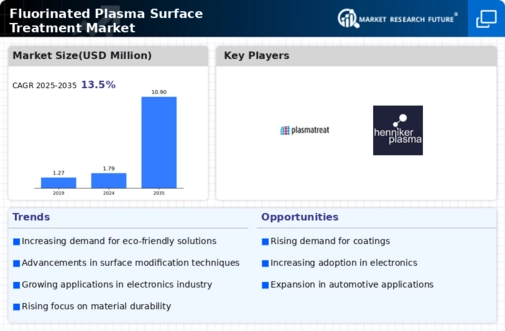
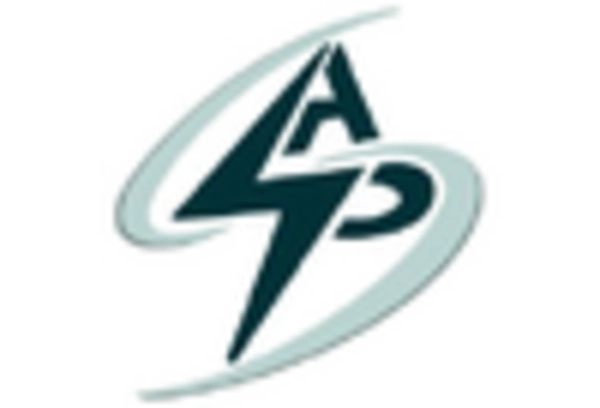
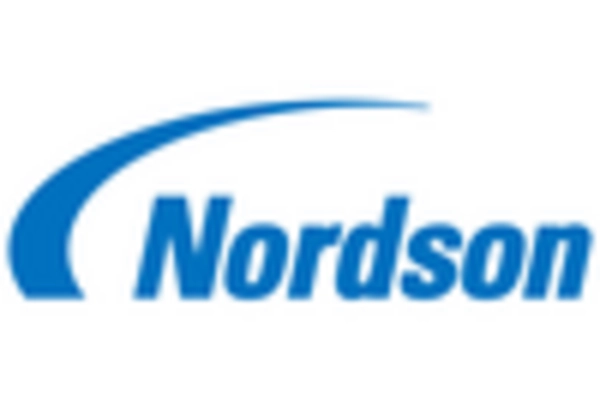
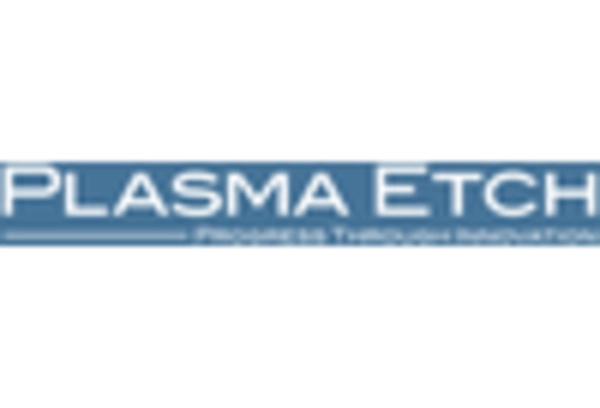
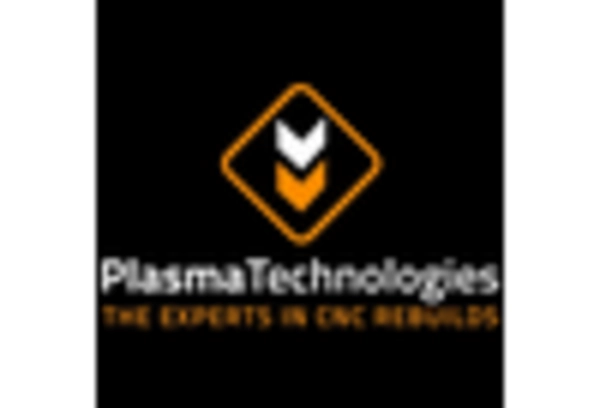
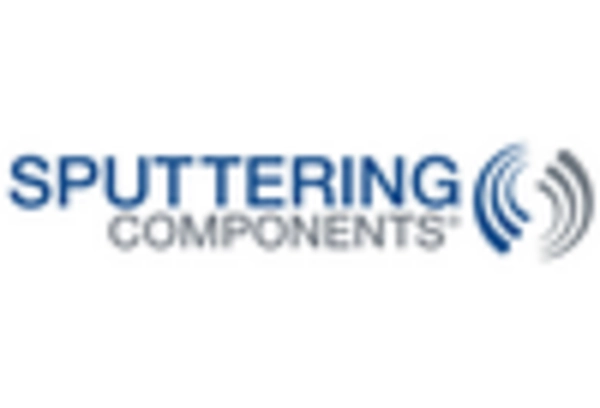
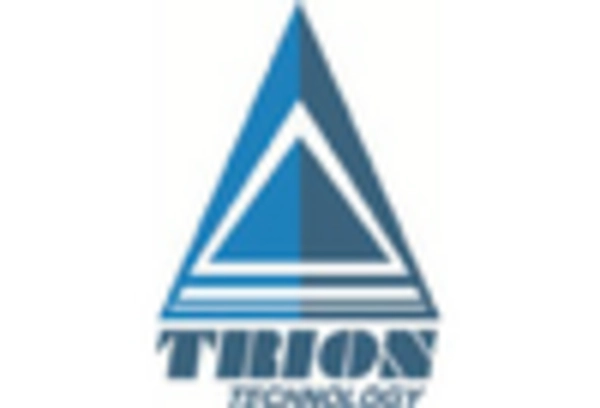









Leave a Comment